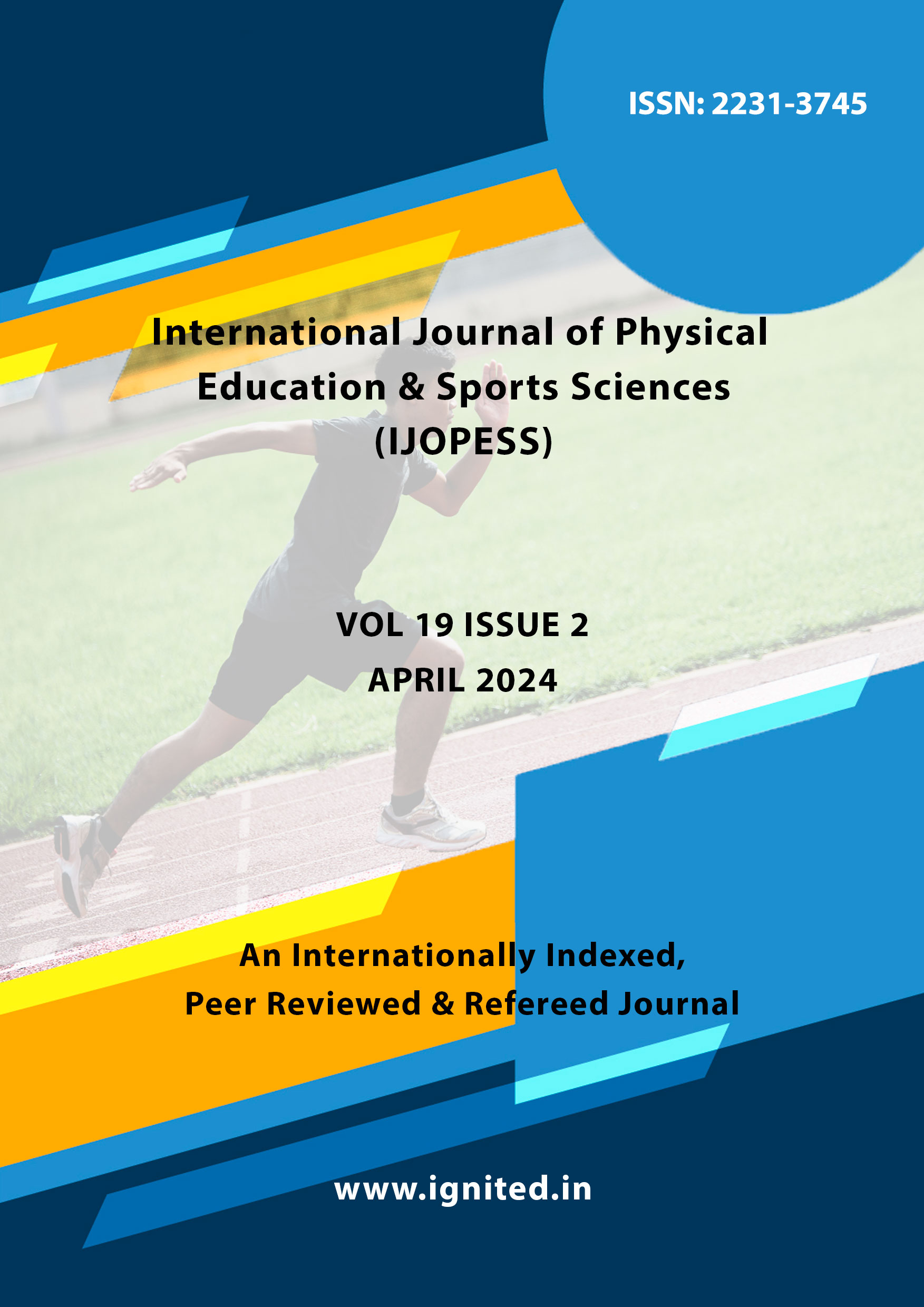An Analysis of Body Composition and Physical status of middle aged Women
Main Article Content
Authors
Abstract
Background: Body composition and physical status are essential indicators of overall health, especially in middle-aged women. This group often undergoes significant physiological changes due to aging, hormonal shifts, and lifestyle factors, affecting their body composition, including fat mass, lean muscle mass, and bone density.
Methodology: A total of 100 women from Varanasi city, comprising both employed individuals and housewives, participated in this study. These women were divided into two groups, each consisting of 100 subjects aged between 35 and 50 years. The selected variables for body composition analysis included total body fat, fat-free mass, bone mass, muscle mass, body mass index, and physical status.
Results: The t-test for Equality of Means revealed a significant difference between the groups, t(198) = 1.660, with p-values indicating substantial differences in total body fat (p < .001), fat-free mass (p < .001), bone mass (p < .000), muscle mass (p < .001), and body mass index (p < .001). Furthermore, there was a significant difference in physical activity levels, t(198) = 11.714, p < .001).
Conclusion: The study found a considerable difference in body composition parameters between employed women and housewives. Employed women exhibited lower total body fat and BMI, and higher muscle mass, fat-free mass, and bone mass compared to housewives. This suggests that employed women, likely due to more structured schedules and better access to physical exercise, maintain a healthier body composition.
Downloads
Article Details
Issue
Section
References
- Cruz-Jentoft, A. J., Baeyens, J. P., Bauer, J. M., Boirie, Y., Cederholm, T., Landi, F., ... & Zamboni, M. (2010). Sarcopenia: European consensus on definition and diagnosis. Age and Ageing, 39(4), 412-423.
- Flegal, K. M., Kit, B. K., Orpana, H., & Graubard, B. I. (2013). Association of all-cause mortality with overweight and obesity using standard body mass index categories: a systematic review and meta-analysis. JAMA, 309(1), 71-82.
- Janssen, I., Katzmarzyk, P. T., & Ross, R. (2002). Body mass index, waist circumference, and health risk: evidence in support of current National Institutes of Health guidelines. Archives of Internal Medicine, 162(18), 2074-2079.
- Kohrt, W. M., Bloomfield, S. A., Little, K. D., Nelson, M. E., & Yingling, V. R. (2004). Physical activity and bone health. Medicine & Science in Sports & Exercise, 36(11), 1985-1996.
- Warburton, D. E., Nicol, C. W., & Bredin, S. S. (2006). Health benefits of physical activity: the evidence. CMAJ, 174(6), 801-809.
- Finkelstein EA, Ruhm CJ, Kosa KM. Economic causes and consequences of obesity. Ann Rev Public Health 2005;26:239–57.
- Wang H, Wang J, Liu MM, et al. Epidemiology of general obesity, abdominal obesity and related risk factors in urban adults from 33 communities of northeast china: the CHPSNE study. BMC Public Health 2012;12:967.
- Hruby A, Manson JE, Qi L, et al. Determinants and consequences of obesity. Am J Public Health 2016;106:1656–62.
- Withrow D, Alter DA. The economic burden of obesity worldwide: a systematic review of the direct costs of obesity. Obes Rev 2011;12:131–41.
- Wang ZM, Pierson RN, Jr, Heymsfield SB. The five-level model: a new approach to organizing body-composition research. Am J Clin Nutr 1992;56:19–28.
- Chomtho S, Fewtrell MS, Jaffe A, et al. Evaluation of arm anthropometry for assessing pediatric body composition: evidence from healthy and sick children. Pediatr Res 2006;59:860–5.
- Xu KZ, Zhu C, Kim MS, et al. Pomegranate flower ameliorates fatty liver in an animal model of type 2 diabetes and obesity. J Ethnopharmacol 2009;123:280–7.
- Brown TM, Cueto M, Fee E. The World Health Organization and the transition from “international” to “global” public health. Am J Public Health 2006;96:62–72.
- Azzeh FS, Bukhari HM, Header EA, et al. Trends in overweight or obesity and other anthropometric indices in adults aged 18-60 years in western Saudi Arabia. Ann Saudi Med 2017;37:106–13.
- Mott JW, Wang J, Thornton JC, et al. Relation between body fat and age in 4 ethnic groups. Am J Clin Nutr 1999;69:1007–13.
- Liu H, Zhao XG, Li LI, et al. Body composition analysis among adults with overweight and obesity in Urumqi. J Chengdu Med Coll 2015;10:49–52
- Yusuf S, Hawken S, Ounpuu S, et al. Obesity and the risk of myocardial infarction in 27,000 participants from 52 countries: a case-control study. Lancet (London, England) 2005;366:1640–9.
- Heo M, Faith MS, Pietrobelli A, et al. Percentage of body fat cutoffs by sex, age, and race-ethnicity in the US adult population from NHANES 1999-2004. Am J Clin Nutr 2012;95:594–602.
- Sameer AZ, Husam AO, Suad AH, et al. High prevalence of metabolic syndrome among Kuwaiti adults—a wake-up call for public health intervention. Int J Environ Res Public Health 2012;9:1984–96.
- Finelli C, Sommella L, Gioia S, et al. Should visceral fat be reduced to increase longevity? Ageing Res Rev 2013;12:996–1004.

